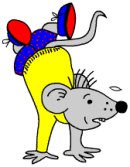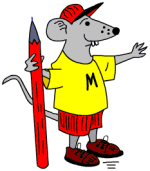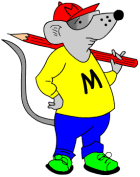 This free year 3 maths worksheet has four number tracks to complete, practicing counting in steps of one up to and including numbers in the hundreds. Notice that the number tracks start at the bottom and go up, rather like the numbers on the vertical axis of a graph.
This free year 3 maths worksheet has four number tracks to complete, practicing counting in steps of one up to and including numbers in the hundreds. Notice that the number tracks start at the bottom and go up, rather like the numbers on the vertical axis of a graph.
It is interesting to watch the way children tackle these. Probably the most efficient way, and the way to minimise mistakes, is to start at the highest number shown and continue counting up. Then return to the lowest number shown and count down.
 One of the key elements in division is to recognise that a number of objects needs to be shared equally. To begin with this can be done on a ‘one for you, one for me’ basis. Some children become fixed on this and always think of division as sharing into 2. Therefore, it can still be useful to use practical objects to share into a number of groups, making sure that each group has an equal number in it.
One of the key elements in division is to recognise that a number of objects needs to be shared equally. To begin with this can be done on a ‘one for you, one for me’ basis. Some children become fixed on this and always think of division as sharing into 2. Therefore, it can still be useful to use practical objects to share into a number of groups, making sure that each group has an equal number in it.  The second of our free maths worksheets using a 1-100 number square to help with subtraction. A number square can be used in much the same way as a number line but it makes it easier to subtract whole tens when subtracting a 2-digit number.
The second of our free maths worksheets using a 1-100 number square to help with subtraction. A number square can be used in much the same way as a number line but it makes it easier to subtract whole tens when subtracting a 2-digit number. In year 3 children will continue to make shapes and patterns; these becoming more complex and more accurate.
In year 3 children will continue to make shapes and patterns; these becoming more complex and more accurate. The work on subtraction facts in year 3 is very similar to that in year 2. Constant practice and re-inforcement is necessary if children are going to become quick in their responses – the numbers do not necessarily have to be larger, but a more rapid answer should be expected.
The work on subtraction facts in year 3 is very similar to that in year 2. Constant practice and re-inforcement is necessary if children are going to become quick in their responses – the numbers do not necessarily have to be larger, but a more rapid answer should be expected. Consolidation of understanding multiplication, very similar to the Year 2 pages, but with larger numbers. These two free maths worksheets ask the children to make number stories for multiplication sentences.
Consolidation of understanding multiplication, very similar to the Year 2 pages, but with larger numbers. These two free maths worksheets ask the children to make number stories for multiplication sentences. Very similar to the Year 2 worksheets these two maths worksheets look again at the language of addition. By now children should be able to read these questions and recognise them as addition questions.
Very similar to the Year 2 worksheets these two maths worksheets look again at the language of addition. By now children should be able to read these questions and recognise them as addition questions. Two more free maths worksheets on counting along a number track, filling the missing numbers. Some of these questionscross the hundreds boundary which is usually where any problems might develop. Encourage your children to say the numbers out loud as they write the numbers down.
Two more free maths worksheets on counting along a number track, filling the missing numbers. Some of these questionscross the hundreds boundary which is usually where any problems might develop. Encourage your children to say the numbers out loud as they write the numbers down. The first of these two worksheets gives an opportunity to sort items into two categories: food and not food. Apologies for the drawings on these – it might be a good idea to discuss what the drawings represent before classifying them as food, or not food!
The first of these two worksheets gives an opportunity to sort items into two categories: food and not food. Apologies for the drawings on these – it might be a good idea to discuss what the drawings represent before classifying them as food, or not food! The second of these pages should probably be covered first; that is finding a pair of numbers that make 20. These types of question should follow on once children are confident and knowledgeable about finding pairs that make 10. These should be known. Progressing to finding pairs to make 20 should then be relatively simple.
The second of these pages should probably be covered first; that is finding a pair of numbers that make 20. These types of question should follow on once children are confident and knowledgeable about finding pairs that make 10. These should be known. Progressing to finding pairs to make 20 should then be relatively simple.